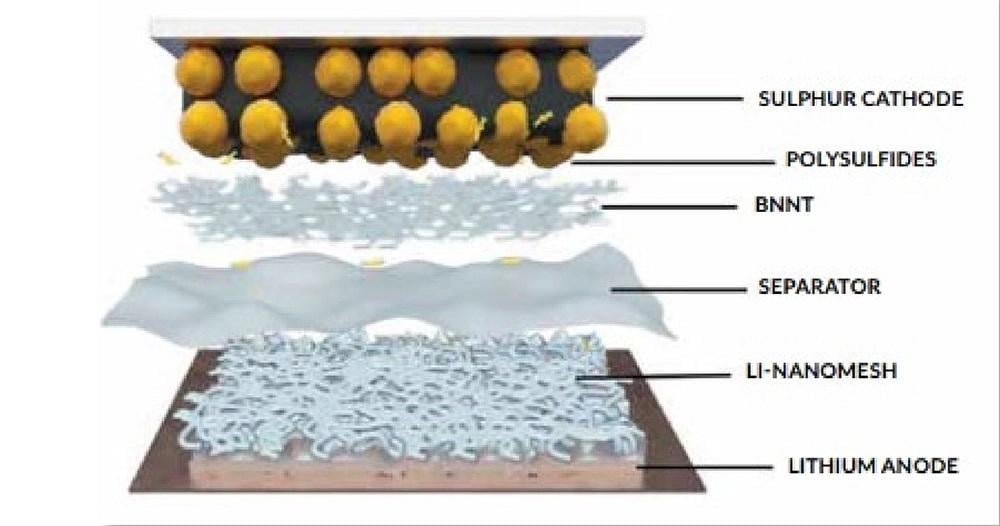
Electric propulsion pioneer MagniX is to evaluate high energy-density lithium-sulfur and lithium metal cells from Australian advanced battery startup Li-S Energy.
Energy density is a key challenge to using batteries to electrify aviation.
Li-S is developing two technologies to improve the performance of lithium-ion batteries. One allows the traditional graphite anode to be replaced with a thin film of pure lithium, potentially doubling the gravimetric energy density. The other additionally replaces the conventional lithium metal oxide cathode with a sulfur/carbon cathode and promises even higher energy density.
Specific challenges must be overcome to develop lithium metal and lithium-sulfur (Li-S) batteries. In a lithium metal cell, the plating and stripping of lithium ions at the cathode during charging and discharging causes dendrites, or spikes, to form that can cause short circuits. This shortens cycle life.
Li-S has developed Li-Nanomesh, a nano-composite designed to suppress dendrite formation. Initial testing by Deakin University in Victoria, Australia, showed “virtually no dendrite formation after 1,000 charge/discharge cycles,” Li-S says. A life of 1,000-plus cycles is a key objective for aviation use.
In a lithium-sulfur battery, the sulfur undergoes changes in its composite and structure during cycling, causing a buildup of chemical deposits that degrade the cell and greatly shorten its life. Li-S protects the cathode using a boron nitride nanotube (BNNT) nanomaterial.
Tests have shown the protection can improve cathode stability during extended cycling. “Our initial testing on a single-layer BNNT-protected pouch cell … has reached 900 charge/discharge cycles while retaining more than 60% of its initial specific capacity,” the company says.
Li-S is scaling up its technology to larger batteries and in July reported it had test flown 10-layer lithium-sulfur pouch cells in a small drone, replacing the original lithium-ion cells. “Our Li-S cells achieved over 2.2 times the gravimetric energy density compared to the original cells,” the company says, adding this will improve as it scales up to 50-layer commercial cells with lower packaging overhead.
Brisbane-based Li-S Energy completed an A$34 million ($23.4 million) initial public offering in September 2021. The company is building a small-scale pilot line to produce multilayer cells for testing and plans to build a 2 MWh pouch cell production facility in Geelong, southwest of Melbourne, Australia.
Originally founded in Australia and now headquartered in the U.S., MagniX is developing 375-hp and 750-hp electric propulsion units and working with partners to re-engine the Cessna Caravan, Robinson R44 helicopter and the De Havilland Canada DHC-2 Beaver, Dash 7 and Dash 8.





